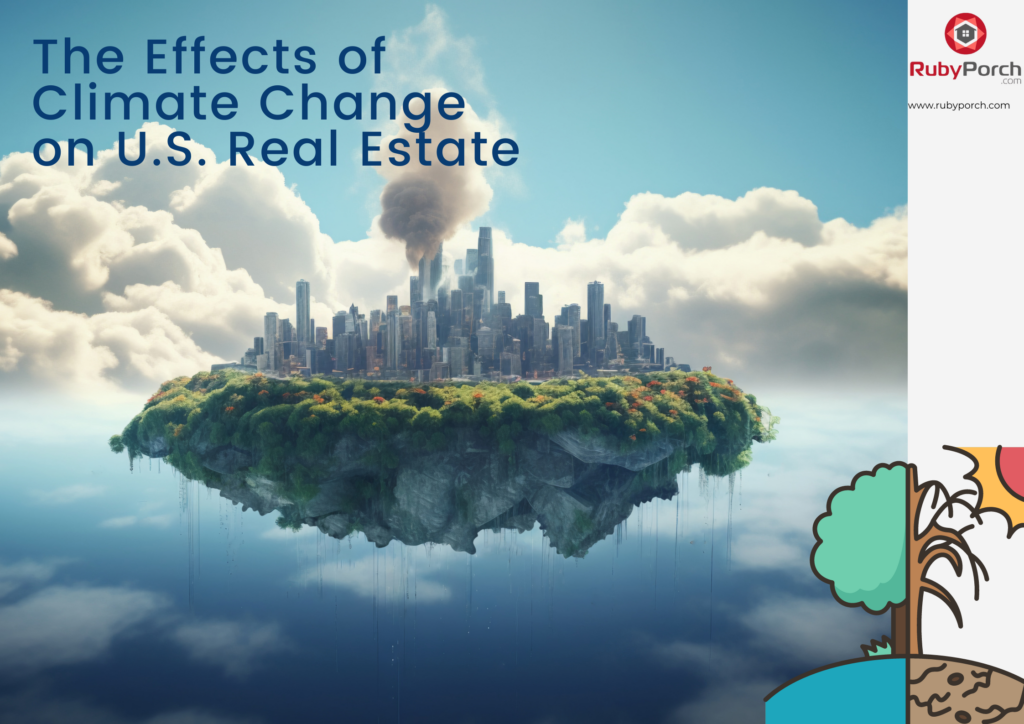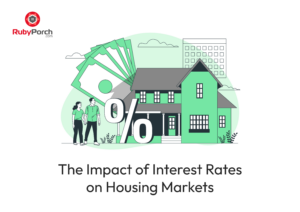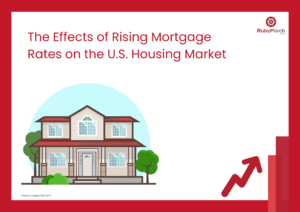Climate change is no longer a distant concern; it’s reshaping the U.S. real estate market today. At RubyPorch, we recognize that your home is not only a place to live but also one of your most significant investments. With rising sea levels, extreme weather events, and other climate-related shifts becoming more frequent, it’s essential for homeowners, buyers, and investors to understand how these changes will impact property values, insurance costs, market demand, and regulations. Here’s a comprehensive look at how climate change is transforming the U.S. real estate market and what RubyPorch clients need to know.
1. Declining Property Values in Climate-Vulnerable Areas
One of the most visible effects of climate change on U.S. real estate is the declining property values in high-risk areas. Coastal properties, traditionally sought after for their beauty and prime locations, are now increasingly at risk due to sea-level rise, flooding, and hurricanes.
Key Examples:
- Coastal Areas: Cities such as Miami, New Orleans, and the Gulf Coast are vulnerable to rising tides and storm surges.
- Inland Vulnerabilities: Fire-prone regions in California and drought-stricken areas in the Southwest are also seeing dips in property values.
A study by the First Street Foundation estimates that over 4 million homes in the U.S. will face chronic flooding by 2050, leading to potentially significant financial losses. Meanwhile, wildfire-prone areas in California have experienced property value declines of 10% or more after major wildfire events.
For Buyers and Sellers:
- Consider climate vulnerability when evaluating the long-term value of properties.
- Homes in high-risk areas may continue to see value declines as environmental risks increase.
2. Soaring Insurance Costs and Coverage Issues
The rising cost of homeowner’s insurance is another significant effect of climate change on real estate. As extreme weather events become more common, insurance companies are increasing premiums for homes in high-risk areas.
Notable Impacts:
- Hurricane-Prone States: Florida has seen steep increases in property insurance rates. Insurance premiums in high-risk areas have risen by nearly 9.3% on average.
- Wildfire-Prone Regions: In California, insurance companies have either raised premiums drastically or refused to insure homes in wildfire zones altogether.
In some cases, state-mandated programs like the California FAIR Plan provide basic coverage for homeowners who cannot find affordable insurance through traditional providers, but these plans are often more expensive and offer fewer protections.
Insurance Challenges for Buyers:
- High insurance premiums make it more difficult to purchase or sell homes in high-risk areas.
- Buyers and sellers must factor in insurance costs when evaluating a property’s financial viability.
3. Changing Buyer Preferences: Demand for Climate-Resilient Homes
As climate awareness grows, more buyers are seeking homes that are climate-resilient and energy-efficient. This shift in buyer preferences is reshaping the real estate market.
What Buyers Are Looking For:
- Homes with features that can withstand natural disasters, such as elevated structures in flood-prone areas and fire-resistant materials in wildfire zones.
- Energy-efficient homes with solar panels, smart thermostats, and LEED certifications, which are increasingly valuable. Research shows that green-certified homes can command a premium of up to 9% compared to non-certified properties.
In California, for example, homes with water-saving features and fire-resistant designs are in high demand, while in coastal regions, homes built to withstand flooding and hurricane-force winds are growing in popularity.
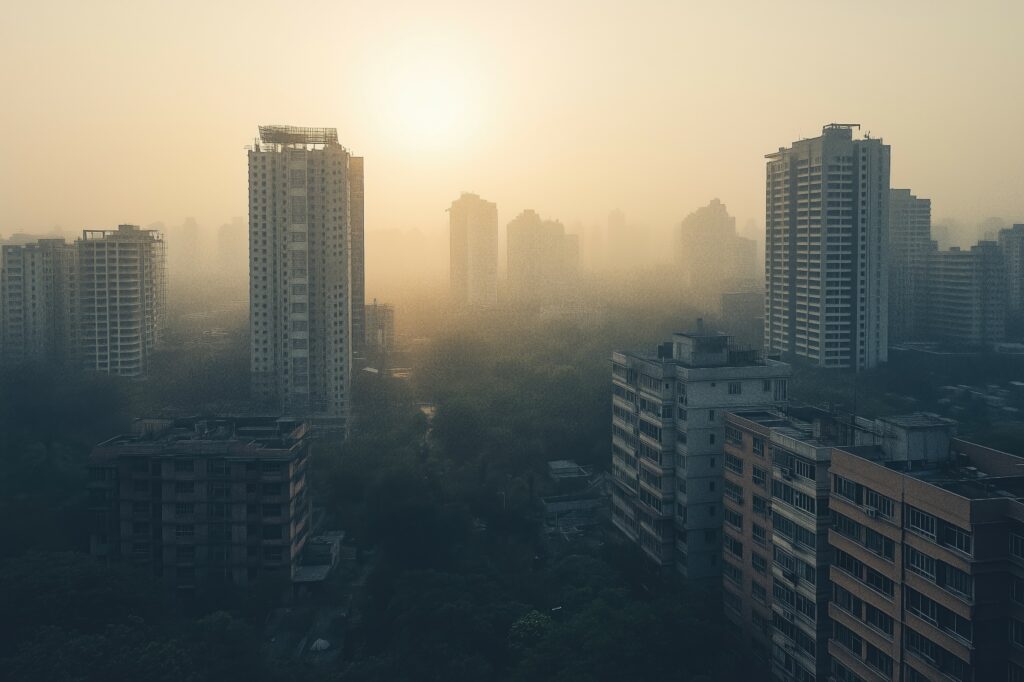
4. The Rise of Climate Havens and Shifting Migration Patterns
Climate change is driving shifts in migration patterns as people move away from high-risk areas to “climate havens”—regions perceived as safer from extreme weather.
Top Climate Havens:
- Great Lakes Region: Cities like Buffalo, New York, and Cleveland, Ohio, are seeing increased demand due to their moderate climates and low exposure to hurricanes, wildfires, and extreme heat.
- Pacific Northwest: Portland, Oregon, and Seattle, Washington, are also attracting buyers looking for stable climates and more sustainable living conditions.
For real estate investors, properties in climate-resilient areas are becoming increasingly attractive. Investing in climate havens offers an opportunity to capitalize on growing demand while mitigating future risks.
5. Stricter Building Regulations and Zoning Laws
Governments are responding to climate risks with stricter building codes and zoning laws aimed at reducing damage from natural disasters.
Key Changes in Regulations:
- Flood-Prone Areas: Cities like New York and Miami have revised building codes to require homes in flood zones to have elevated foundations and flood-proof designs.
- Wildfire Zones: In California, new regulations mandate fire-resistant materials for homes and require defensible space around properties to minimize fire risk.
Zoning laws are also evolving to limit or prevent development in high-risk areas. These changes drive up construction costs, but homes that meet modern regulations are seen as more resilient and valuable.
6. The Role of Real Estate in Climate Change Mitigation
Real estate plays a vital role in climate change mitigation. By focusing on sustainable and energy-efficient construction, developers, investors, and homeowners can help reduce the industry’s environmental impact.
How Real Estate Can Contribute to Sustainability:
- Energy-Efficient Homes: Developers are increasingly building homes with solar power, advanced insulation, and energy-saving systems. These properties are not only more eco-friendly but also in high demand.
- Green Infrastructure: Investors who prioritize sustainability can benefit from tax incentives and grants while meeting growing market demands for environmentally conscious housing.
- Home Upgrades: Homeowners can make improvements like installing solar panels, upgrading insulation, or investing in storm-resistant materials, which both protect their homes and reduce energy consumption.
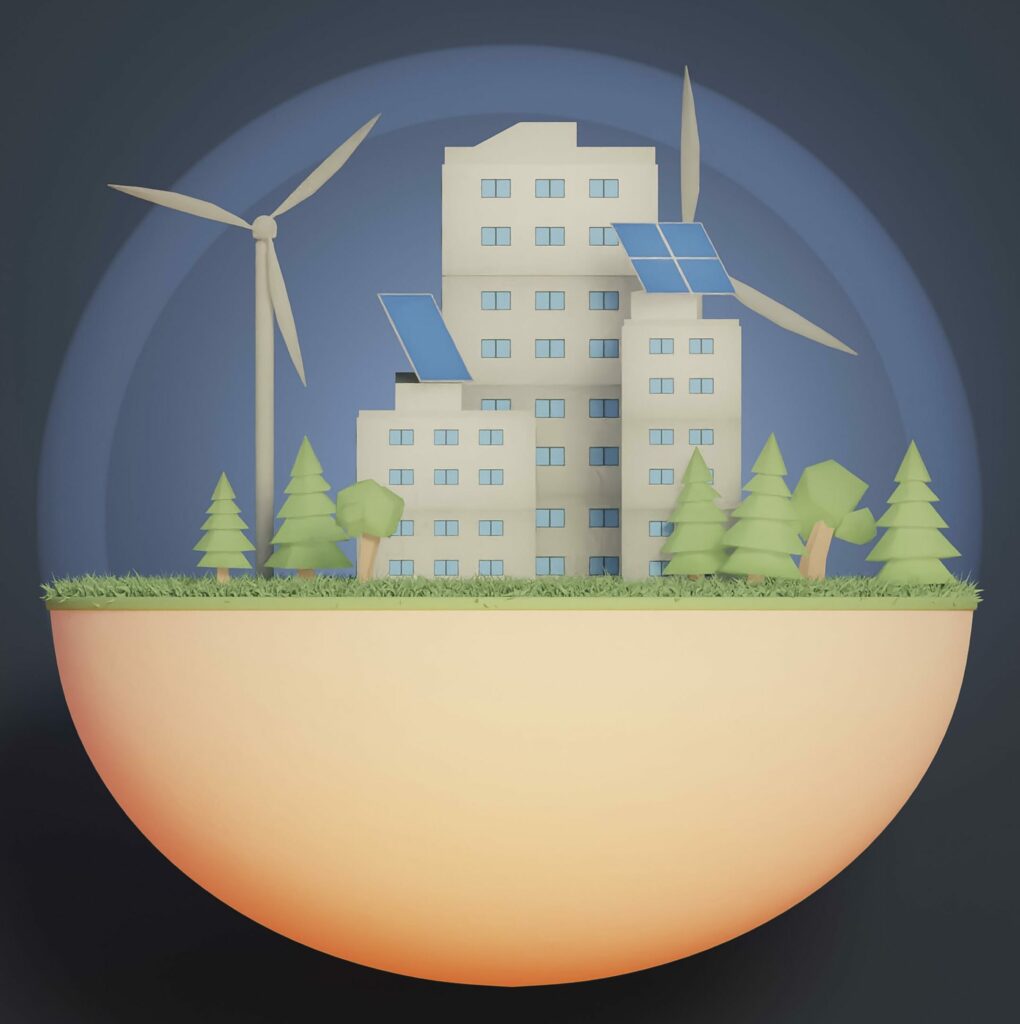
Commonly Asked Questions (FAQs)
- How does climate change affect home values in the U.S.?
Climate change can lower home values in areas prone to natural disasters such as hurricanes, floods, or wildfires. Properties in climate-vulnerable regions often see declines in value due to increasing risks, high insurance costs, and lower demand. - What are climate havens, and where are they located in the U.S.?
Climate havens are areas that are less susceptible to the adverse effects of climate change, such as extreme weather events. In the U.S., regions like the Great Lakes, Pacific Northwest, and parts of the Midwest are gaining popularity as climate havens. - What features should I look for in a climate-resilient home?
Climate-resilient homes are designed to withstand natural disasters. Look for homes with reinforced roofing, flood-resistant materials, elevated structures, fire-resistant materials, and energy-efficient systems like solar panels and smart thermostats. - How are insurance premiums affected by climate change?
In climate-vulnerable areas, insurance premiums are rising due to the increased likelihood of natural disasters. Homeowners in states like Florida, Texas, and California are seeing significant premium increases, and some may face difficulty securing affordable coverage. - How can I make my property more climate-resilient?
To enhance your property’s climate resilience, consider retrofitting it with upgrades such as storm-resistant windows, reinforced roofs, elevated foundations, and fire-resistant materials. Additionally, installing energy-efficient features like solar panels can reduce energy consumption and increase your home’s appeal to buyers.
Conclusion
The effects of climate change on U.S. real estate market are significant and far-reaching. From declining property values in high-risk areas and soaring insurance premiums to shifts in buyer preferences and regulatory changes, the landscape is evolving rapidly.
At RubyPorch, we’re committed to helping our clients navigate these changes and make informed decisions. By understanding how climate change is reshaping the market, homeowners, buyers, and investors can protect their investments and ensure long-term success.
For more information or to explore climate-resilient real estate opportunities, visit RubyPorch or contact one of our expert agents today.



